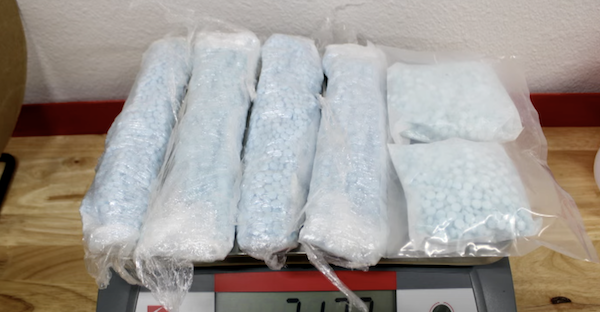The Las Cruces Police Department held a Town Hall Meeting at City Hall on Thursday, September 12, 2024 addressing the status of law enforcement activities in Las Cruces. The introductory information provided was general in nature, but it was stated how much of the general crime in our broader community it linked to the trafficking of, and addiction to, narcotics.
A Las Cruces Digest Report
The following is brief summary of the high points presented in the Town Hall, and Las Cruces Digest encourages you to watch the presentation in its entirety, below.
Metro Narcotics
Gabe Arenibas, Special Agent in Charge, Metro Narcotics. Metro Narcotics is an institutionalized joint operation involving the Las Cruces Police Department, Doña Ana County Sheriff’s Office and the New Mexico State Police Department. Also, the operation includes three FBI agents who sit at the task force.
Metro Narcotics runs multiple operations, and works predominantly undercover. It is a proactive task force, focused on drug trafficking.
High Intensity Drug Trafficking Area (HIDTA)
Kevin Renn, former LCPD officer, is currently a representative of Overdose Response Strategy, a public health/public safety partnership addressing the overdose epidemic through the High Intensity Drug Trafficking Area, a CDC Foundation. According to HIDTA statistices, as of the most recent data in 2022, New Mexico has the 8th highest overdose death rate per 100,000 people in the nation. Overdoses are the 7th leading cause of death in New Mexico.
There is a mental health component to the drug problem that is more prevalent in our broader community than nationally. In Doña Ana County, there is a high correlation between substance abuse and “suicidal ideation” among overdose survivors.
Treatment Options for Opioid Use Disorder
Athena Huckabee, a public health official, presented information regarding the treatment landscape locally for fentanyl use and the challenges in treating it. She summarized the goal for treatment during the question-and-answer session as: “To make it easier to call for treatment than it is to call the dealer.”
Huckabee presented a well-researched overview of treatment options available (and unavailable) in our broader community. The medication-based treatment options available, with the exception of methadone, do not eliminate withdrawal symptoms. While methadone does the best job at minimizing withdrawal symptoms, it is highly regulated and not readily available in all treatment regimines. Huckabee cited a Yale study that concluded abstinence treatment (or treatment without a medicinal component) had no more positive outcomes than not treating the addiction–at all. In one study, it was indicated that a “cold turkey” approach to treating opioid addiction can be more detrimental than no treatment at all.
There are no in-patient facilities that use an FDA approved medication-based treatment for opioid use disorder.
Fentanyl remains the primary driver of overdose deaths, accounting for nearly 99% of all overdose deaths.
New Vocabulary
polysubstance use:
Iron Law of Prohibition:
Watch the Town Hall Meeting:






